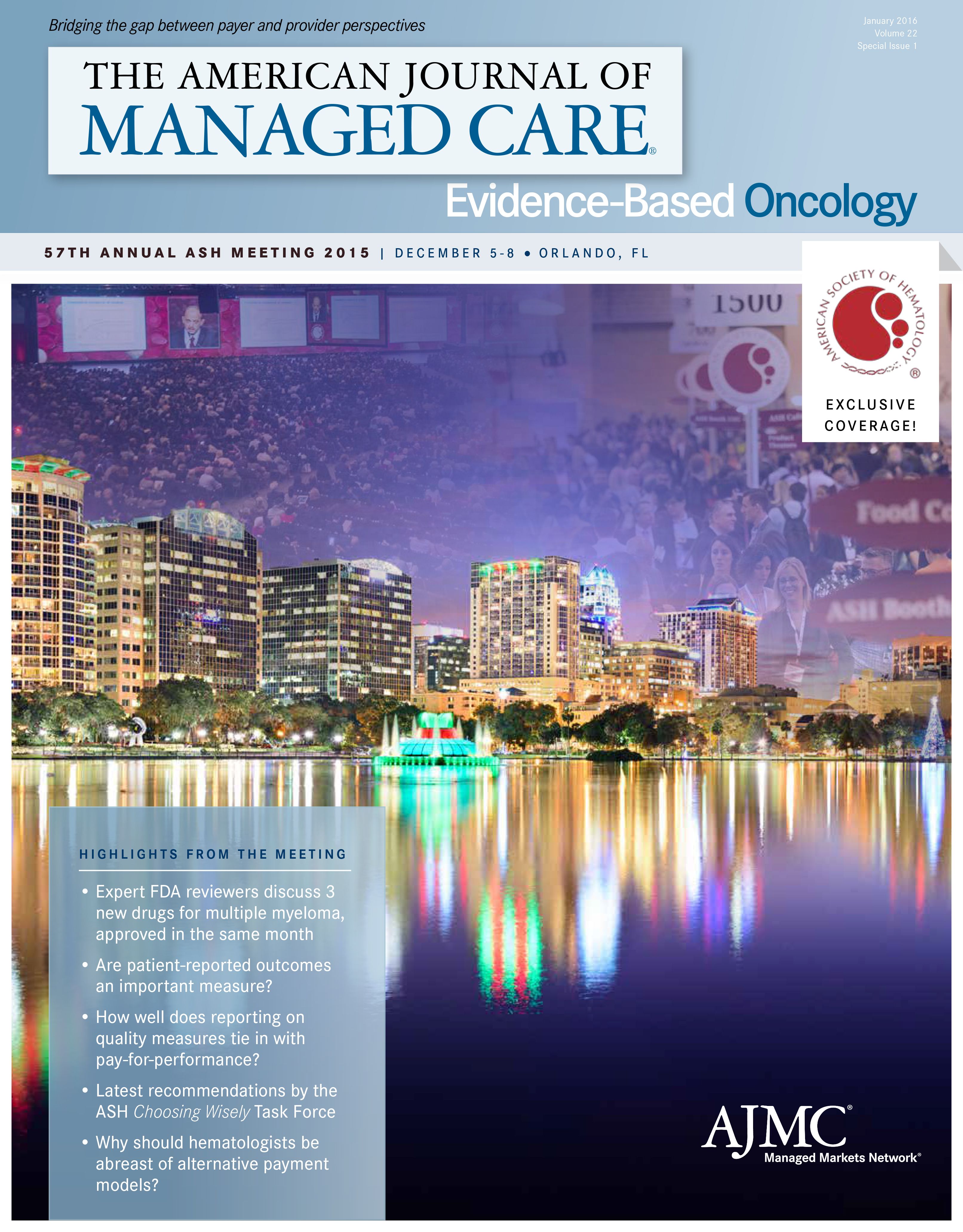Publication
Article
Evidence-Based Oncology
Does Geographic Location Influence Healthcare Utilization in Children With Lymphoma?
Author(s):
A study presented at the 57th meeting of the American Society of Hematology finds that distance from the site of care could could adversely affect outcomes in children with acute lymphoblastic leukemia and acute myeloid leukemia.
Geographic location can prove to be an important, and sometimes, life-threatening barrier to healthcare access, especially for a complicated disease like cancer. In these cases, the most advanced care services may be offered only by select hospitals or clinics in metropolitan regions.
To assess healthcare utilization and costs in children with acute lymphoblastic leukemia (ALL) and acute myeloid leukemia (AML) based on geographic distance from their primary cancer center, researchers at the Children’s Mercy Hospital in Kansas City, MO, analyzed data from the Pediatric Health Information System (PHIS) database, which collects information for inpatient resource utilization at 48 children’s hospitals in the USA. The premise of the study, which was presented at a Health Services and Outcomes Research session at the annual meeting of the American Society of Hematology, was that distance from the site of care can delay access to care services, resulting in complications that can increase healthcare costs.
The authors analyzed data from patients (21 years or younger) who were diagnosed with ALL or AML between the first quarter of 2010 and the third quarter of 2013. The total number of hospitalizations and resources utilized and billed were measured 12 months following the index hospital stay for ALL patients, and 6 months for AML patients. Data gathered from PHIS included total cost per day, length of stay (LOS), prevalence of ICU stay, prevalence of total parental nutrition (TPN) use, and ventilator use. Stratified data, depending on chemotherapy vs non-chemotherapy stays, were compared between children living less than 60 miles versus more than 60 miles from the PHIS hospital.
For the ALL group, 12,884 hospital admissions were recorded for chemotherapy and 13,842 admissions for non-chemotherapy. Based on their analysis, the authors concluded that travel distance to the hospital (less than or more than 60 miles) did not impact ICU, TPN, or ventilator days among patients admitted for chemotherapy. However, there was significantly greater ICU stay (4.5% vs 6.1%, P = .001) and TPN use (5.1% vs 6.6%, P = .004) in children living more than 60 miles from the hospital who were admitted for non-chemotherapy purposes.
In children with AML, 2855 chemotherapy and 1414 non-chemotherapy—related admissions were recorded. In this cohort, the results were different than those observed with the ALL patients. AML patients living more than 60 miles away from the hospital and admitted for chemotherapy had longer LOS, and more ICU use (4.1% vs 6.7%, P = .009). Those admitted for non-chemotherapy purposes who lived beyond 60 miles of the hospital had more prevalent ICU (8.3% vs 14.5%, P = .03) and TPN use (9.7% vs 15.7%, P = .06), and greater hospitalization cost and cost per day.
EBO
REFERENCE
The results of the study support the hypothesis that geographic distance from cancer centers increases healthcare resource consumption and cost, at least for unplanned admissions associated with complications in children with ALL and AML. This, in turn, implies that distance from the site of care could result in adverse complications in these critically ill children and could adversely affect outcomes.
Hall NS, Gamis AS, Hall M. Comparing the utilization of health care resources in children with ALL and AML based on geographic location: a retrospective analysis utilizing the PHIS database. American Society of Hematology website. https://ash.confex.com/ash/2015/webprogram/Paper79149. html. Accessed December 20, 2015.





